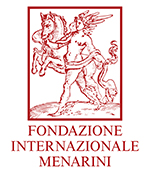
Press Release
Young people and cardiovascular disease, assessing family history and genetic predisposition
Early screening could help identify subjects at risk
Pisa, 20 June 2016- Atherosclerosis and high blood pressure are no longer the only factors that determine cardiovascular disease, also to be considered is the genetic predisposition related to specific gene mutations that have been clearly identified. Family history and genetic predisposition are especially important in young people as it is not rare for cardiovascular problems to be found among them.These are the indications emerging from the“International Summit on Ischemic Heart Disease”organized by the Cardio-Thoracic Department of the University of Pisa and promoted by the Fondazione Internazionale Menarini.
“Genetic predisposition determines a high risk of cardiovascular events. This means that in a certain sense, already from birth there is a greater or lesser likelihood of having these kinds of events during life. Added to this initial predisposition, in pejorative or protective terms, one’s lifestyle and other classical risk factors we are already aware of naturally have an impact too”, explained Mario Marzilli, Professor at the Department of Surgical, Medical, Molecular and Critical-area Pathology at the University of Pisa and Chairman of the Congress.
“Based on the most recent observations, with genetic screening we will be able to identify, right from an early age, which subjects are at the highest risk of cardiovascular disease and thus concentrate on preventive measures in this subgroup of the population. There is the possibility of drawing up a genetic risk profile for patients. It is not sufficient just to find a single gene mutation or a single polymorphism, because this type of risk is generated when there is an association of several polymorphisms. In order for everyone to know themselves and their genetic predisposition, it is necessary to start with the family history: cases of vascular disease in the family, especially in young people, call for particular attention”. The next step is genetic screening for subjects at risk, starting from young people. This is what the Fondazione Italiana Cuore e Circolazione (Italian Heart and Circulation Foundation)and the Società Italiana di Cardiologia(Italian Cardiology Society)have started doing with the “A scuola di Cuore”(At the Heart School)project, with second degree cardiovascular screening in secondary schools via the performing of electrocardiograms in children aged between 16 and 18 years.
In a population of just on eight thousand apparently healthy students who underwent the exam, in 21%, electrocardiographic alterations were observed that deserved in-depth diagnostic analyses.From the second degree exams performed on 1600 students with suspect electrocardiograms, there was clear evidence of eighty of these who were suffering from cardiac disease that required treatment. If this approach were to be applied to a wider population, it would allow for limiting the use of therapy in the high-risk subgroup due to the fact that currently, the molecules that have a preventive effect do not express this if administered to the entire population. Vice-versa, if the preventive measures are applied in general terms, their effectiveness becomes so diluted that the cost-benefit ratio is lost. In addition, people at risk, aware of their condition, would be more motivated to take preventive measures. Also in reference to young people, among the students examined in the “A scuola di Cuore” project,15% of these had a family history of cardiovascular disease, 19% were smokers, 13% were alcohol abusers and 6% declared that they took drugs.“The well-known rules of a healthy lifestyle apply to everyone: to follow a proper diet, avoid smoking and alcohol, and get physical exercise”, added Marzilli. “Valid advice for everyone, but especially for those with a higher risk, even more so if still young”
Download PDF